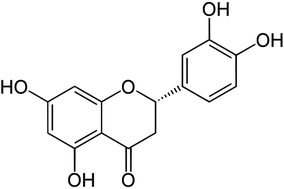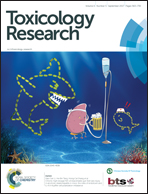Effect of eriodictyol on preneoplastic lesions, oxidative stress and bacterial enzymes in 1,2-dimethyl hydrazine-induced colon carcinogenesis
Abstract
Eriodictyol, one of the strong flavonoids extracted from Eriodictyon californicum, is known for its antioxidant and anticarcinogenic properties. We estimated the chemopreventive effect of eriodictyol on 1,2 dimethylhydrazine (DMH)-induced experimental colon carcinogenesis in male albino Wistar rats. The rats were randomized into six groups. Our results evaluated the effect of eriodictyol supplementation (200 μg per kg b.w.) on DMH (20 mg per kg b.w)-induced rats (Groups 4–6). The incidence of polyps, aberrant crypt foci (ACF) and the lipid peroxidation levels were significantly decreased as compared to those in the DMH-alone treated rats (Group 2). In eriodictyol-supplemented DMH-treated rats, we observed increased activity of enzymatic and non-enzymatic antioxidants in the circulatory system, liver, and colon. The bacterial enzymes activities of mucosa and faecal were significantly decreased in the group with treatment of eriodictyol on DMH-induced rats. Moreover, in the eriodictyol-supplemented DMH-exposed rats, we observed reduced malignant glands of a histopathological appearance in both liver and colon tissue. Furthermore, we also observed reduced AgNORs counts of eriodictyol supplemented to the DMH-exposed rats. Therefore, we can conclude that eriodictyol can be used as an effective chemopreventive agent against DMH-induced colon carcinogenesis in experimental animal models.



 Please wait while we load your content...
Please wait while we load your content...